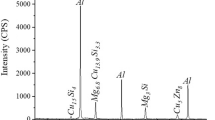Abstract
Titanium and its alloys are commonly utilized in the aerospace and automobile sectors, because of its superior corrosion resistance, chemical inertness, strength properties. Machining of Titanium alloys using traditional method is extremely challenging task due to it has low thermal conductivity, poor electrical conductivity, quick strain hardening, high cutting tool temperatures, poor surface quality, and built-up edge formation. Hence, Nontraditional machining methods, like WEDM, can overcome these technical challenges and produce complicated part forms with good surface polish with high precision. Hence, the current study focuses on how process variables affect the responses like rate of removal (RR) and roughness (Ra). Because WEDM is an extremely complicated stochastic process, even an incidental variations in one of control factors can cause the responses to change, choosing an appropriate process parameter combination is vital. As a result, to cater the needs of today's industrial technology and customers, a thorough investigation into the choosing appropriate process parameters and solutions is required. So, multi-objective optimization based on principal component analysis (PCA) was used to optimize the process parameters.











Similar content being viewed by others
Data availability
On request, the dataset used it to facilitate the results of this study can be received from the corresponding author.
References
Alduroobi AAA, Ubaid AM, Tawfiq MA, Elias RR (2020) Wire EDM process optimization for machining AISI 1045 steel by use of Taguchi method, artificial neural network and analysis of variances. Int J Syst Assur Eng Manag 11:1314. https://doi.org/10.1007/s13198-020-00990-z
Barenji RV, Pourasl HH, Khojastehnezhad VM (2016) Electrical discharge machining of the AISI D6 tool steel: prediction and modeling of the material removal rate and tool wear ratio. Precis Eng 45:435–444
Bharat C, Khatria Pravin P, Rathod J, Valaki B, Sankhavara CD (2017) Insights into process innovation through ultrasonically agitated concentric flow dielectric streams for dry wire electric discharge machining. Mater Manuf Process 33:1438–1444
Chalisgaonkar R, Kumar J (2014) Parametric optimization and modeling of rough cut WEDM operation of pure titanium using grey-fuzzy logic and dimensional analysis. Cogen Eng 1(1):1–28
Datta RS, Biswal BB (2019) Experimental studies on electro- discharge machining of Inconel 825 super alloy using cryogenically treated tool/workpiece. Measurement 145:611–630
Goswami A, Kumar J (2014) Investigation of surface integrity, material removal rate and wire wear ratio for WEDM of Nimonic 80A alloy using GRA and Taguchi method. Eng Sci Technol Int J 17(4):173–184
Goyal A (2017) Investigation of material removal rate and surface roughness during wire electrical discharge machining (WEDM) of Inconel 625 super alloy by cryogenic treated tool electrode. J King Saud Univ Sci 29:528–535
Hasani A, Mokhtari H, Fattahi M (2021) A multi-objective optimization approach for green and resilient supply chain network design: a real-life case study. J Clean Prod 278:123199
Hotelling H (1933) Analysis of a complex of statistical variables into principal components. J Educ Psychol 24(6):417–441
Jabbaripour B, Sadeghi MH, Faridv S, Shabgard MR (2012) Investigating the effects of EDM parameters on surface integrity MRR TWR Machining Ti–6Al–4V. Mach Sci Technol 16:419–444
Kapoor J, Singh S, Khamba JS (2015) Effect of cryogenic treated brass wire electrode on material removal rate in wire electrical discharge machining. J Mech Eng Sci 226(11):2750–2758
Kumar S, Batish A, RupinderSingh., AnirbanBhattacharya., (2017) Effect of cryogenically treated copper-tungsten electrode on tool wear rate during electro-discharge machining of Ti-5Al-2.5Sn alloy. Wear 386–387:223–229
Nayak BB, Mahapatra SS (2016) Optimization of WEDM process parameters using deep cryo-treated Inconel 718 as work material. Eng Sci Technol Int J 19:161–170
Oliver-Nesa-Raj S, Prabhu S (2017) Modeling and analysis of titanium alloy in wire-cut EDM using grey relation coupled with principle component analysis. Aust J Mech Eng 15(3):198–209
Pearson K (1901) On lines and planes of closest fit to systems of points in spaces. Philos Mag Ser 2:559–572
Rajesh S, Sharma AK, Kumar P (2012) On electro discharge machining of Inconel 718with hollow tool. J Mater Eng Perform 21(6):882–891
Senthilkumar C, Ganesan G (2015) Electrical discharge surface coating of EN38 steel with WC/Ni composite electrode. J Adv Microsc Res 10:202–207
Tahir W, Jahanzaib M (2019) Multi-objective optimization of WEDM using cold treated brass wire for HSLA hardened stee. J Braz Soc Mech Sci Eng 41:525–539
Torres A, Luis CJ, Puertas I (2017) EDM machinability and surface roughness analysisof TiB2 using copper electrodes. J Alloys Compd 690:337–347
Vázquez-Méndez ME, Casal G, Castro A (2020) Optimization of an urban railway bypass. A case study in a Coruña-Lugo line Northwest of Spain. Compd Ind Eng 151:106935
Walia RS, Shan HS, Kumar P (2006) Multi-response optimization of CFAAFM process through Taguchi method and utility concept. Mater Manuf Process 21:907–914
Acknowledgements
The authors are grateful for the support of the Production Technology Department, MIT,Chennai.
Funding
The authors declare that they have no funding of this study.
Author information
Authors and Affiliations
Contributions
Dr. C. Senthilkumar, who completed the experiments and wrote the manuscript. Dr. C. Nandakumar, who carried out the analysis.
Corresponding author
Ethics declarations
Conflict of interest
The authors state that there is no conflict of interest.
Ethical approval
There are no human or animal studies are mentioned in this article.
Consent to participate
Not applicable.
Consent to publish
The manuscript does not contain any data from individuals, hence it is not applicable.
Additional information
Publisher's Note
Springer Nature remains neutral with regard to jurisdictional claims in published maps and institutional affiliations.
Rights and permissions
Springer Nature or its licensor (e.g. a society or other partner) holds exclusive rights to this article under a publishing agreement with the author(s) or other rightsholder(s); author self-archiving of the accepted manuscript version of this article is solely governed by the terms of such publishing agreement and applicable law.
About this article
Cite this article
Senthilkumar, C., Nandakumar, C. Optimization of wire electro discharge machining parameters using principal component analysis. Int J Syst Assur Eng Manag 14, 1040–1048 (2023). https://doi.org/10.1007/s13198-023-01916-1
Received:
Revised:
Accepted:
Published:
Issue Date:
DOI: https://doi.org/10.1007/s13198-023-01916-1




